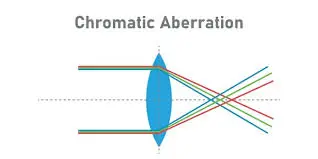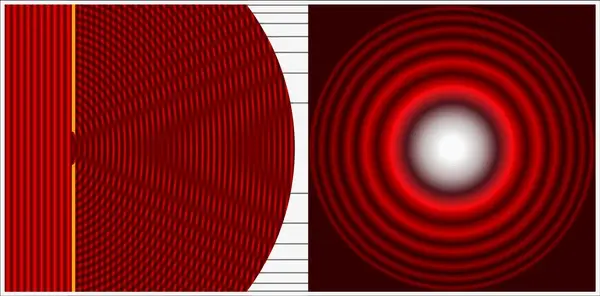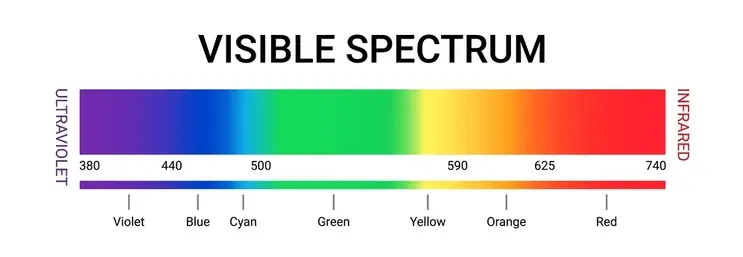A basic understanding of wavelength and imaging
Wavelength is the distance traveled by two waves with the same vibration state at a fixed point in a wave phenomenon, usually represented by λ, with units such as nanometers (nm) or micrometers (μm). In optics, wavelength specifically refers to the length of light waves. It is an important characteristic of light waves and determines their color, energy, and interaction with other substances.
Imaging refers to reproducing the shape, size, color, and other information of an object in the form of an image through some ways (e.g., an optical system). In optical imaging, the light emitted or reflected by an object will form an image of the object on the image plane after being refracted or reflected by the optical system. This image can be real or virtual, depending on the light’s actual intersection point or the extension line’s intersection point.
The relation between wavelength and imaging
When light passes through different media (such as glass, water, air, etc.), light of different wavelengths bends at different angles. This bending is particularly noticeable when light passes through a prism and produces a rainbow effect, where shorter wavelengths (e.g., blue light) bend more than longer wavelengths (e.g., red light). In imaging systems, this bending may cause difficulties in detail resolution and information acquisition.
Read related post> A Journey to Methods for Excellent Imaging
About chromatic aberration

Chromatic aberration exists in two basic forms: lateral color shift and chromatic focal shift.
At the center of the image, the light spots produced by different wavelengths of light are concentric. When moving towards the corners of the image, the wavelengths tend to separate and create a rainbow effect. Due to this color separation, the given points on the object are imaged over a larger area, leading to reduced contrast. This effect is more significant for sensors with smaller pixels, as blurred patterns are distributed over more pixels.
Chromatic focal shift is related to the ability of a lens to focus all wavelengths equidistant from it. Different wavelengths have different optimal focus planes. This wavelength-dependent shift in focal length causes reduced contrast because different wavelengths generate light spots of different sizes on the image plane of the sensor. All colors cannot be focused at once. Monochromatic illumination can improve contrast by eliminating chromatic focal shift and lateral chromatic aberration.
In imaging systems, different wavelengths of light may cause chromatic aberration due to differences in refractive index. To avoid this issue, imaging and machine vision systems usually use monochromatic illumination, which only involves a single wavelength or narrow band of light in the spectrum, thereby eliminating chromatic aberration and improving image quality.
Generally speaking, the shorter the wavelength, the higher the imaging system’s resolution. This is because short-wavelength light can reduce diffraction effects, minimizing the spot size, thereby improving the system’s spatial resolution. For example, in microscopy imaging, short-wavelength light sources (such as ultraviolet light) usually achieve higher resolution.
Wavelength also affects the depth of field of the imaging system. Shorter wavelengths tend to produce a larger depth of field, allowing images to remain sharp over a wider range. This is particularly important for imaging applications where precise focusing is required.
Read related post> Getting to Know Industrial Lenses with Achromatic Design
The impact of wavelength on lens performance
In addition to affecting the resolution and depth of field of the lens, wavelength is also closely related to the light transmittance of the lens. Using a thin anti-reflective coating on the lens surface can reduce reflections and increase light transmittance. While broadband coatings can be used for chromatic imaging, the best transmission usually comes from using a monochromatic light source and a lens coating designed for specific wavelengths.
The wavelength needs to be considered when designing a lens for chromatic aberration correction. By choosing the proper glass material and coating technology, a lens with excellent chromatic aberration correction performance can be produced.
The relation between wavelength and diffraction

When a light wave encounters an obstacle or passes through a small hole, diffraction occurs, that is, the light wave diffuses around the obstacle or passes through the small hole. The resulting diffraction pattern, with a bright area in the center surrounded by a series of concentric rings of decreasing brightness, is known as the airy disk (minimum spot size). It is the smallest point to which a light beam can be focused, and the diameter of its pattern is related to the wavelength of the illuminating light and the size of the circular aperture. The airy patterns produced by the focus on different details on the object will be close together and then begin to overlap. When overlapping patterns cause enough interference to reduce contrast, eventually the patterns become indistinguishable from each other. As pixel size continues to decrease, this interference becomes increasingly significant.
In general, diffraction effects lead to image blur and reduced resolution. The longer the wavelength, the more obvious the diffraction effect is, and the higher the blurring of the image. Therefore, short-wavelength light sources are often chosen in applications requiring high-resolution imaging.
Applications at different wavelengths

Visible light imaging: Using the visible spectrum of 400~700nm for imaging, it is widely used in daily life, photography, medicine, and other fields.
Infrared imaging: Infrared imaging uses infrared light (wavelength greater than 700nm) for imaging, which can reveal the thermal radiation information of objects. Depending on the wavelength range, infrared imaging can be divided into types such as near-infrared (NIR), short-wave infrared (SWIR), and long-wave infrared (LWIR). These types of infrared imaging are widely used in agriculture, medical treatment, security monitoring, non-destructive testing, and other fields.
Among them:
- Near-infrared (NIR): It is used to detect non-surface features such as decay, mechanical damage and insect pests in food, and to penetrate certain dyes and inks for printed packaging inspection.
- Short-wave Infrared (SWIR): It is used in agriculture to detect moisture distribution in large quantities, as well as to detect impurities in semiconductor ingots and cracks in polycrystalline materials, etc.
- Long-wave infrared (LWIR): It is used for high-precision surface temperature distribution measurement and is widely used in monitoring, security, rescue, industrial non-destructive testing, and process detection.
UV Imaging: UV imaging utilizes ultraviolet light (wavelengths less than 400nm) to image and is capable of detecting scratches and defects on polished or highly mirrored surfaces, as well as subtle details in products such as printed circuit boards, documents, and credit cards.
Read related post> Main Parameters of Light Sources
Advice for real cases
 In some complex application scenarios, a single light source may not be able to solve the problem effectively. In this case, you can consider using a combined light source to achieve better detection results with light sources of different wavelengths.
In some complex application scenarios, a single light source may not be able to solve the problem effectively. In this case, you can consider using a combined light source to achieve better detection results with light sources of different wavelengths.
Using filters can filter out unwanted wavelengths and only allow light of a certain wavelength to enter the lens for imaging. This helps improve image quality and reduce interference.
Read related post> The 360° Inner Wall Inspection of Cylindrical Li-ion Battery’s Shell
Conclusion
During the imaging process, wavelength directly affects the transmission and refraction of light, which in turn affects the clarity of the image. Short-wavelength light has higher energy and can be focused precisely on the imaging plane. Controlling wavelengths can optimize imaging quality, reduce chromatic aberration, and improve light transmittance.
The wavelength used in any machine vision application has important implications for selecting the most appropriate lens. Because a wider spectral range requires more sophisticated lens designs. Selecting a wavelength must also consider other factors, including aberration correction and the physical environment where the lens is used.




